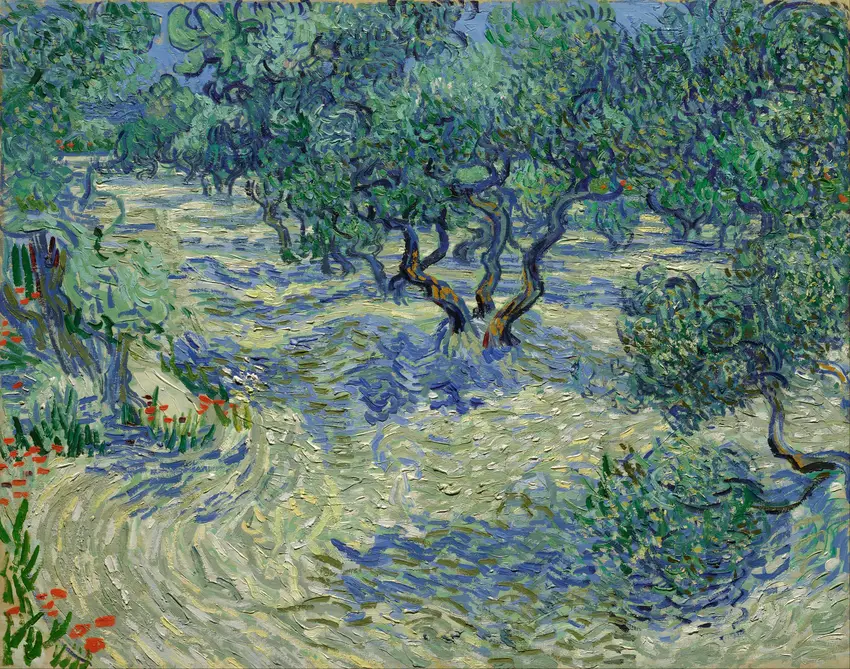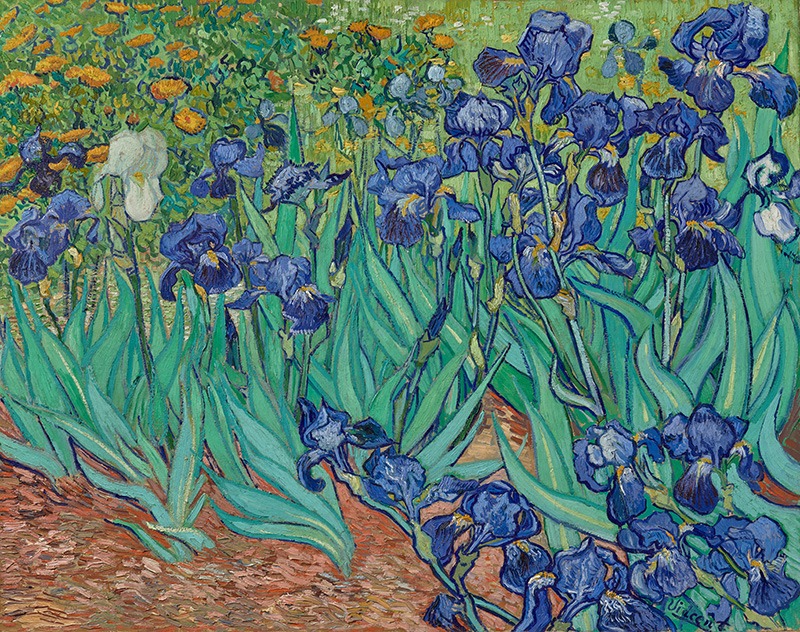-
-full.webp)
Two women on the heath (1883)
A windswept heath frames two solitary figures, their forms merging with the rugged earth under a brooding sky.
-

Olive Orchard
A vibrant olive grove pulses with van Gogh’s signature energy, where twisting trees and restless skies merge into a dance of light and shadow.
-
-full.webp)
The Sower (1888)
A lone farmer scatters seeds under a blazing sky, his figure small against the swirling colors of earth and sunset.
-

Irises (1889): Van Gogh’s Dance with Chaos and Grace
Painted during Vincent van Gogh’s voluntary stay at the Saint-Paul-de-Mausole asylum in 1889, this canvas pulses with raw energy, yet whispers of fragile control.
